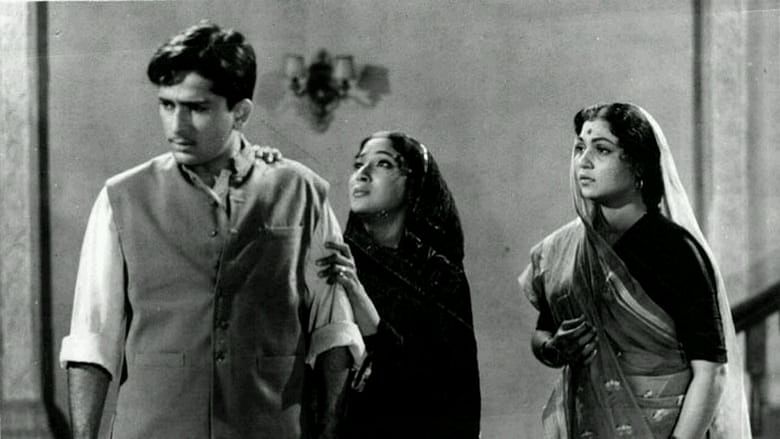Very few Indian filmmakers have attempted to make a film on the country’s Partition in 1947. B.R. Chopra and Yash Chopra took that risk with their film Dharmputra — the first Hindi film on Partition — in 1961, when the wounds were still fresh. Yash Chopra, who was just one-film-old and still in his late 20s, sensitively and boldly took on the subject of Hindu-Muslim unity, communal harmony and Hindu fundamentalism.
This Republic Day, when we will once again celebrate the spirit of Indian Constitution — a great equaliser — it‘s only fair to revisit such films that emphasised on the spirit of India, its composite culture, and peaceful co-existing (for the most part).
Dharmputra marked the debut of young Shashi Kapoor, who later established himself as one of the most charming romantic heroes in Hindi cinema. Yash Chopra, the director, also came to be known as the King of Romance. Interestingly, their first collaboration had little romance but a strong social message. Dharmputra also stars Mala Sinha, Ashok Kumar, Rajendra Kumar, and Nirupa Roy. The film deals with the period of 1925-1947, the pre-Partition era, and takes a close look at changing political scenarios and their effect on families.
Nawab Badruddin (Ashok Kumar) is a friend of Dr Amrit Rai (Manmohan Krishna). He is troubled because his unmarried daughter Husn Bano (Mala Sinha) is pregnant with the child of her lover. Being family friends, Dr Rai and his wife Savitri (Nirupa Roy) adopt the baby. Bano’s father finally agrees to get her married to her lover Javed (Rehman), whom he had earlier rejected because he belonged to a ‘lower’ caste. This is noteworthy because very few films in Indian cinema have dealt with the caste hierarchy present in Muslim communities.
Nawab, a great advocate of Hindu-Muslim unity, dies during the Civil Disobedience Movement with the slogan ‘Hindu-Muslim bhai bhai’ on his lips. Savitri gives birth to two more children but Bano is unable to bear children due to an accident. Bano’s son, Dileep, who has been adopted by the Rai family, is oblivious of his identity and calls Bano her mausi (aunt).
The two families live peacefully and even construct a bridge to join their houses so that Dileep can visit his ‘aunt’ whenever he wants.
The story moves forward and Javed and Bano soon leave India for Europe and return before Partition in 1947, a time when religious fundamentalism and Hindu-Muslim animosity is on a rise. Dileep (Shashi Kapoor) is a handsome, grown-up young man who has turned into a fanatic and religious fundamentalist. He is your Bajrang Dal-prototype who does not like the fact that people of his generation wear western clothes, disrespect ‘sanskriti’ and do not perform ‘puja-paath‘. The rest of the film is about how the two families navigate the pre-Partition period and how Dileep comes to terms with his religious bigotry.
Also read: M.S. Sathyu’s Garm Hava still speaks to a country wrestling with questions over citizenship
Subtle references of fundamentalism
In an interview in 1984, Yash Chopra had said, “I saw massacres with my own eyes and lived through the frenzy, the foolishness and the madness of the time. What I saw in those days, I used in Dharmaputra, but I did not make the film because of what I saw. When I read the novel [by Acharya Chatursen], something of that experience must have spurred me to make the film.”
Perhaps their real experiences of dealing with the Partition helped them bring more depth and nuances to the film. Shashi Kapoor’s character stands out as the Hindu fundamentalist who believes in ‘Hindi, Hindu and Hindustan’ and hates Muslims. But he is forced to reassess his beliefs when he finds out that he was born to Muslim parents. In one of the scenes, which is supposed to be romantic, Yash Chopra could not resist bringing Dileep’s real character element. During a walk with Dileep’s love interest, the woman says, “Aaj ka mausam bahut accha hai (today the weather is really nice).”
Dileep responds, “Hamare desh ka mausam toh hamesha hi accha hota hai, ye baat to videshi log kahte hain (Our country’s weather is always pleasant, only foreigners say this).”
It shows how the love for his country has seeped into his subconscious to make him a fundamentalist. But this love is dangerous, as is revealed in one of the later scenes, when Dileep gets angry with his brother and screams at him, “if you say anything against religion, I will kill you.”
Dharmputra is full of references and songs depicting India’s cultural and religious harmony. Sahir Ludhianvi’s qawwali in the film “Ye Masjid hai woh Butkhana, chahe ye maano chahe woh maano (this is the mosque, and that is the temple, you can believe in either)”, is a fitting tribute to India’s secular character. Amrit Rai, in one of his dialogues towards the end, compares the demon of religious fundamentalism to mythological demons like Ravana, Duryodhana, etc.
To make a film on Hindu religious fundamentalism would be nearly impossible today. It would probably not even pass the checks of the Censor Board, or would give rise to nationwide protests, which also happened when Dharmputra was released in 1961. The film was not commercially successful due to violent protests in cinema halls, but won the Best Feature Film in Hindi National Award. It won’t be until 1973 when M.S. Sathyu would touch the sensitive subject of Partition in his film Garm Hava.
(Edited by Prashant)
